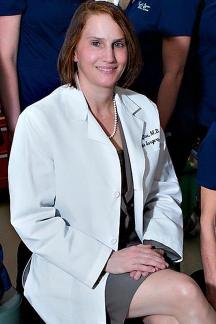Loftus Plastic Surgery Center
Natural Results from a National Expert
Right Here In Cincinnati and Northern KentuckySchedule a
Consultation
513-793-4000
859-426-5000
Silicone vs. Saline
A Comparison
This is a big decision in breast augmentation – one of the most important. After educating yourself on the important issues on this page, be sure to visit the following pages, which cover in detail the advantages and disadvantages of saline implants and the advantages and disadvantages of silicone implants, and Dr. Loftus’ advice on which way you should go.Implant Contents and Shells
Implants are named according to what fills them. In other words, saline implants are filled with saline (sterile saltwater), and silicone implants are filled with liquid silicone gel, which has the consistency of molasses.Regardless of what breast implants are filled with, they all have a solid silicone shell.
Solid silicone, or silastic, has been implanted in millions of people in pacemakers, artificial joints, heart valves, penile implants, and artificial lenses for the eye, so we know it is safe. Solid silicone is a very different substance than silicone gel, which fills silicone gel implants.
It might be helpful to think of breast implants as being similar to balloons. A balloon may be filled with water, helium, or air, but has the same pliable plastic outer layer regardless of what is placed inside.
History of Saline and Silicone Gel Implants
Both saline and silicone implants have been used since the 1960s. From 1968 (when silicone gel implants were introduced) to 1992 (when silicone gel implants were temporarily banned by the FDA), silicone was the overwhelmingly most popular type of implant due to its extraordinarily natural look and feel. In 1992, the FDA issued a moratorium on silicone gel implants based on concern that they might cause auto-immune diseases such as lupus and rheumatoid arthritis. From 1992 to 2006, saline filled implants with solid silicone shells, also known as saline implants, were the only option available to women in the United States seeking breast augmentation. Throughout that time, silicone gel remained the implant of choice for women in Europe, South America, and Canada. In 2006, the FDA lifted the restriction on silicone gel breast implants after it was presented with substantial evidence that silicone gel implants did not cause such diseases. It was determined that a woman’s risk of developing these diseases was the same whether she had silicone gel implants or no implants.Silicone Gel Implants: Pros and Cons
The advantage of silicone gel implants is primarily aesthetic: they look and feel so soft and natural that they typically cannot be distinguished from breasts without implants (provided they do not develop a capsular contracture). They also have a lower rate of rippling and wrinkling. Also, because silicone is lighter than saline, the risk of downward displacement due to gravity is lower. There are disadvantages of silicone gel breast implants. They impose a higher cost (by about $900- $1000) and a longer scar. The longer scar is necessary as silicone gel implants are pre-filled by the manufacturer, so they must be able to fit through the incision. In general, larger implants require longer scars. Also, the risk of capsular contracture may be slightly higher with silicone especially if placed in the subglandular plane. This is because silicone implants might incur a late capsular contracture due to implant rupture whereas saline implants do not generally form capsular contractures in response to rupture or deflation. Finally, silicone gel implants might rupture "silently", such that there is no outward evidence that a rupture has occurred. Physical exam by your plastic surgeon will identify only 30% of ruptures, whereas MRI will identify about 90% of ruptures, so women with silicone gel breast implants may consider MRI scans. The FDA recommends routine MRIs for women with silicone breast implants, but find out why Dr. Loftus does not necessarily recommend this.Gummy Bear Implants
Gummy Bear Implants are the thickest type of silicone gel implants, whereas most silicone gel implants have the consistency of molasses, Gummy Bear implants are as thick as, well, Gummy Bears. As a result, they are even less prone to wrinkling than regular silicone gel implants, but they also feel more stiff. For most women, this trade off is not worthwhile, which is why regular silicone gel remains far more popular than Gummy Bear implants. There are other reasons, as well, which can be found on Gummy Bear Implants.Saline Implants: Pros and Cons
Saline implants have different advantages than silicone. Saline implants have a lower rate of revision surgery than silicone gel, as saline implants tend to get early capsular contractures, if any, rather than both early and late. Hence, the overall rate of capsular contracture is lower for saline than silicone. Further, the scar is shorter, as saline implants can be filled after they are placed, allowing a smaller incision. Finally, the cost is lower (by about $900-$1000 per pair of implants), and there is no need for MRI, as silent rupture is not a concern. If a saline implant shell ruptures, the saline generally leaks out and is absorbed by the body within a day or so, resulting in an obviously smaller breast.The primary disadvantage of saline implants is that they tend to look round and feel stiff and unnatural, particularly in thin women with modest breast tissue. Further, large saline implants have a higher rate of downward displacement than silicone, as they are simply heavier than their silicone counterparts. See Saline Implants for more details.
The Ideal Saline Implant
The Ideal Saline Implant combines the natural look and feel of silicone implants with the advantages of saline implants, so that women don’t have to settle or compromise when choosing implants.Recommendations
The best way to decide whether to have silicone or saline implants is to first decide which issue or issues are most important to you. For example, if it is most important to look and feel natural, then choose silicone. If you instead most want lower cost, shorter scar, lower rate of capsular contracture, and no need for MRI, then choose saline. If you want the best of both and are willing to pay more, consider Ideal Saline.In general, thin women with a modest amount of breast tissue tend to select silicone gel implants, as the cosmetic advantages are substantial and easily offset the known disadvantages for many women.
In general, heavy women and those with a more generous amount of breast tissue will enjoy less of an aesthetic advantage with silicone, as both silicone and saline tend to feel soft and natural in women with more breast tissue. Hence, the disadvantages of silicone implants are not warranted, and saline is often selected. An exception here is with larger implants. If a large implant is selected, silicone offers the advantage of a lower rate of downward displacement.
Women with an intermediate amount of breast tissue will find themselves caught in the middle of this decision. For these women, Dr. Loftus recommend they decide which is most important: optimal cosmetic result (silicone) or lower rate of capsular contracture, lower cost, shorter scar, and no need for MRI (saline). Once they make this decision, the choice is clear. And, as already noted, the Ideal Saline Implant offers the advantages of both saline and silicone.
Don’t forget to visit all of the tips this site has to offer on breast augmentation.

About Dr. Loftus
Dr. Loftus is a female plastic surgeon who is considered a national authority on plastic surgery, having appeared on numerous talk shows as an expert. Her book has become a best-selling book on plastic surgery and has earned her the reputation as a vocal advocate of patient safety, satisfaction, and education in plastic surgery. No wonder her patients have such great things to say about her…

| My results are amazing - Dr. Loftus is amazing! |
Reviews on Loftus Plastic Surgery Center
TV Appearances of Dr. Loftus
Cincinnati: The Christ Hospital2139 Auburn Avenue, Suite 201
Cincinnati, OH 45219
(513) 793-4000
View Map
Cincinnati, OH 45219
(513) 793-4000
5 minutes from downtown Cincinnati,
At the Christ Medical Office Building
At the Christ Medical Office Building
View Map
Northern Kentucky1881 Dixie Highway, Suite 300
Fort Wright, KY 41011
859-426-5000
View Map
Fort Wright, KY 41011
859-426-5000
3 minutes from downtown Cincinnati &
visible from I-71/75
visible from I-71/75
View Map






